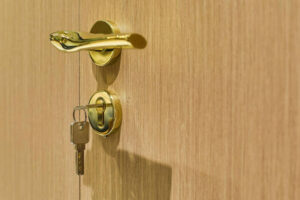How to Identify Tamper-Proof High-Security Locks with Patented Key Control Systems
The high security door locks are essential for keeping your home or business safe from intruders. But how do you know if a lock is truly tamper-proof? It’s not as simple as just picking any old lock off the shelf. There’s an art and science to it, folks.
First things first, let’s talk about patented key control systems. These aren’t your run-of-the-mill keys that you can get copied at the local hardware store. Nope! These babies have special patents protecting their design, making unauthorized duplication nearly impossible. Imagine trying to photocopy money; it’s kinda like that but for keys.
So why should you care about these fancy keys? Well, picture this: You’ve got a roommate who keeps “borrowing” your stuff without asking (we all know someone like that). With patented key control systems, they can’t just sneak out and make a copy of your key when you’re not looking. Peace of mind in a tiny metal form!

Now let’s dive into some nitty-gritty details on identifying these high-security locks:
1. Keyway Design: The shape and cut of the keyway itself often look different compared to standard locks. It might seem odd or overly complex—almost like something out of a spy movie.
2. Sidebars & Secondary Locking Mechanisms: Some high-security locks feature additional mechanisms inside them which add extra layers of protection against picking and bumping attacks.
3. Material Quality: A solid indicator is what they’re made from—high-grade steel or brass instead of cheap alloys that bend easier than wet noodles.
You might be wondering if all this tech-talk actually translates into real-world safety benefits? Short answer: Yes! Long answer involves less sleep lost worrying about break-ins because someone decided to go full MacGyver on your front door.
Here’s another gem for ya—the restricted distribution channels mean only authorized dealers can sell these bad boys legally ensuring fewer chances rogue copies floating around out there causing mayhem willy-nilly-like.
How to Identify Tamper-Proof High-Security Locks and Outsmart Intruders
Ever been locked out of your own house? It’s frustrating, right? Now imagine someone else trying to break in. That’s a whole different ball game. The good news is that high security door locks are designed to keep intruders at bay. But how do you know if your lock is really up to snuff?
First off, let’s talk about what these sneaky intruders actually do. One common tactic they use is picking the lock—think old-school spy movies where they wiggle some pins around until it clicks open. Modern-day thieves have more sophisticated tools, but the principle remains the same.
Then there’s bumping—a technique that involves using a specially cut key and “bumping” it with a hammer or other object to jolt the pins into place just long enough for them to turn the cylinder.
And don’t even get me started on drilling! This brute-force method involves literally drilling through parts of the lock mechanism until it gives way.
So how do high-security locks counteract these shenanigans? Let’s dive in:
1. Pick-Resistant Pins: Some high-security locks come with uniquely shaped pins inside that make traditional picking methods nearly impossible. These might include mushroom-shaped or spool-shaped pins which catch on each other when manipulated incorrectly.
2. Bump-Proof Technology: Bump-proof locks often feature special pin configurations or additional locking mechanisms within their cylinders that prevent this type of attack from working effectively.
3. Drill Resistance: Many high-security models incorporate hardened steel inserts or plates within critical areas of their construction specifically designed to resist drill attacks.
Imagine walking down memory lane—remember those cartoons where characters would slip on banana peels left and right? Well, think of tamper-proof features as metaphorical banana peels for burglars—they trip them up at every turn!
Another nifty feature worth mentioning is key control systems found in some top-tier security setups. You can only duplicate keys via authorized dealers who maintain strict records—making unauthorized copies almost impossible without leaving traces behind like breadcrumbs leading back home.
Speaking of breadcrumbs, let’s talk about another sneaky trick—impressioning. This method involves inserting a blank key into the lock and subtly manipulating it to create tiny marks that can be used to craft a working key. High-security locks counter this with tight tolerances and advanced internal mechanisms that make impressioning much harder.
Now, you might be wondering if these high-tech features mean you’ll need an engineering degree just to use your front door. Fear not! These locks are designed for everyday folks like you and me. They offer peace of mind without requiring us to become locksmiths ourselves.
But let’s get real for a second: no lock is 100% foolproof. However, what high-security locks do is buy time—precious minutes that could mean the difference between a thwarted break-in and coming home to find your valuables gone.
Here’s an anecdote for you: A friend of mine once had his house broken into despite having standard deadbolts on all doors. The thieves were in and out within five minutes, grabbing electronics and jewelry before vanishing into thin air. After upgrading to high-security locks with drill-resistant plates and pick-proof pins, he slept easier knowing any future intruders would face significant hurdles.
Let’s switch gears for a moment because I want to touch on something often overlooked—the installation process itself matters just as much as the lock’s quality! Even the best lock won’t perform well if installed incorrectly or paired with flimsy doors or frames. Think of it like putting premium gas in an old clunker—it won’t run smoothly unless everything else is up to par too!
So how do we ensure our investment pays off? Here are some tips:
1 Professional Installation: Hire someone who knows their stuff when installing these sophisticated devices.
2 Reinforced Doors & Frames: Pair those top-notch locks with sturdy materials around them.
3 Regular Maintenance: Just like cars need oil changes; locks benefit from occasional check-ups too!
And hey—you don’t have go overboard either! There are plenty mid-range options offering excellent protection without breaking bank balance wide open (pun intended). It’s about finding balance between security needs budget constraints while still keeping unwanted guests at bay.
A little humor never hurt anyone so here goes nothing: Remember when Ross from Friends tried moving couch up stairs shouting “Pivot!” repeatedly? Well imagine trying move same couch through locked door equipped tamper-proof system—that burglar isn’t getting anywhere fast!






